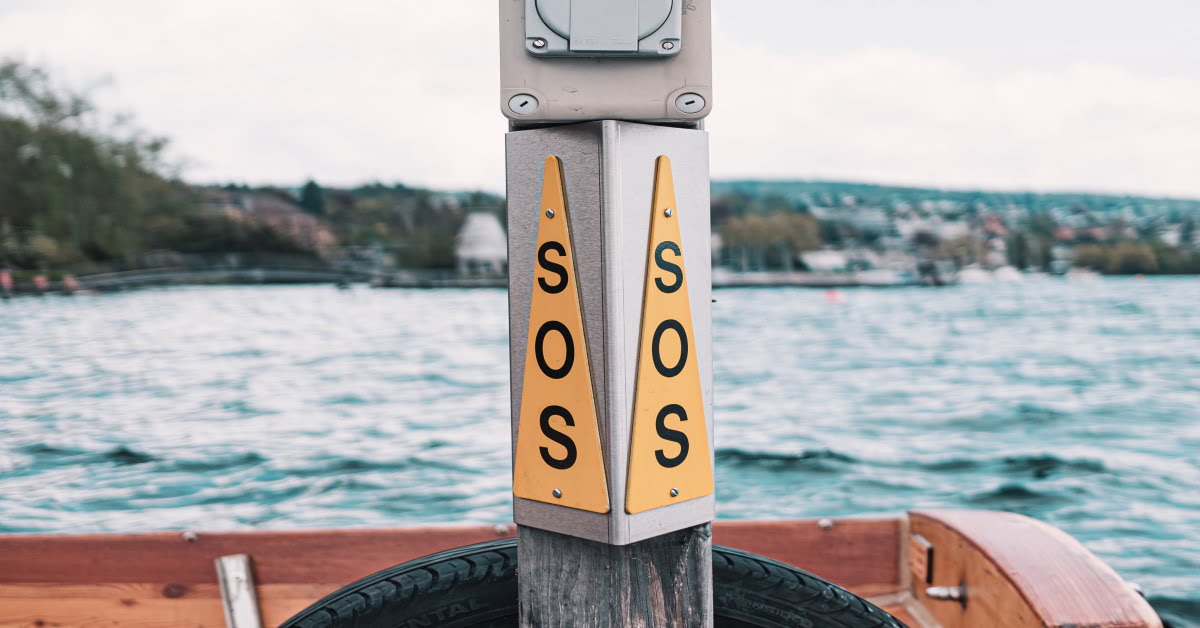It is generally accepted that the designation of the most famous distress sign is an abbreviation of the English words Save Our Souls. We checked if this is true.
In the textbook for universities “Methods of autonomous human survival in nature” it says, that "the distress signal SOS ("save our souls") was adopted by the International Convention in Berlin on November 3, 1906." In one of episodes In the cult novel “The Twelve Chairs” (1927), the radio operator hears shouts on the air: “Wow! Wow, wow! SOS! SOS! SOS! Save our souls! Similar appeal mentioned in the documentary book by polar explorer Rudolf Samoilovich “S.O.S. in the Arctic." The same idea underlies the titles of Soviet films 1960, Russian film 2005 and Serbian film 2007. And, perhaps, the most famous Russian-language mention of the phrase “Save our souls” in connection with the SOS signal can be found in the book of the same name song Vladimir Vysotsky. A similar association is also popular in West, especially in English-speaking countries.
The invention of radio opened a new page in the history of navigation. Previously, ships used standard audio and visual signals for emergency or routine communications - for example, semaphore flags, signal flares and bells. However, since the end of the 19th century, people opportunity arose use wireless telegraphy (as radio communication via Morse code was first called) - a much more convenient means for such purposes. True, in the early years of radio, the process of standardizing distress signals was blocked due to rivalry between competing radio companies.
In 1903, a Pre-Conference on Wireless Telegraphy, in which Italian captain Quintino Bonomo proposed that ships in distress should send the SSS DDD signal at intervals of several minutes. However, procedural issues went beyond the scope of the conference, so not a single standard signal was included in the final protocol. This did not stop representatives of the Marconi International Marine Communication Company, which on January 7, 1904 introduced for all ships equipped with its radios, CQD distress signal. It consisted of a general call to all stations (CQ, or - · - · - - · - in Morse code), to which was added the letter D (- · ·), meaning danger. As often happens with backronyms, the sailors soon picked up the phrase “Come Quick, Danger” to match the signal.
However, due to brand restrictions, CQD radios could not be called a uniform international distress signal. And so, in 1906, a II International Radiotelegraph Conference, at which a representative of Marconi Co. tried to convince others of the need to approve the company's signal as an international standard. However, due to the arguments of the American side, which argued that the signal is often confused with the general CQ call, and in addition, it is also used on land (in case of railway accidents), it was decided to choose a different combination.
Competition with Marconi Co. in those years, it was led by the German concern Telefunken, whose operators in emergency situations used three additional signals adopted by Germany in 1905 as a national standard. One of these signals was Notzeichen — a distress sign, consisting of nine characters: · · · — — — · · · (three dots, three dashes, three dots). It is important to note that this sign did not contain letter spacing, that is, it was not a combination of letters, but was a separate, unique symbol nine characters long, which, thanks to this property, could not be confused with any other. The proposal to accept this signal was approved, and for many years it became the main sign of distress. Exists delusion, as if the signal was first sent in 1912 from the sinking Titanic, but this is not so. In terms of this parameter, the famous ship was not only inferior to at least several others (the first “combat” use of the signal dated 1909), but also, according to the latest data, first used the CQD signal, which was already outdated at that time, which caused a mocking reaction from the party that received the signal. And the glorious history of the sign known as SOS continued until 1999, when it was consigned to the dustbin of history and replaced automatic warning system GMDSS, based on satellite communications. Today it is used only in certain cases.
Why did the signal come to be called SOS? Indeed, if you break his notation into three equal parts (· · ·, - - - and · · ·), they correspond to the letters S, O and S in Morse code. However, this action is technically incorrect and can only be explained by mnemonic needs: SOS and most other combinations from this sequence of dots and dashes (for example, VTB, IJS, VGI) are easier to remember. A formally the sign is written as SOS with a bar on top,

since it is a separate “letter” of Morse code. Needless to say, a non-existent word cannot have an official decoding. All sorts of options for Save Our Souls, Save Our Spirits, Save Our Ship or even “Save from Death” appeared after the signal began to be used in practice. So common knowledge is nothing more than folk etymology.
Not true
Read on topic:
If you find a spelling or grammatical error, please let us know by highlighting the error text and clicking Ctrl+Enter.







